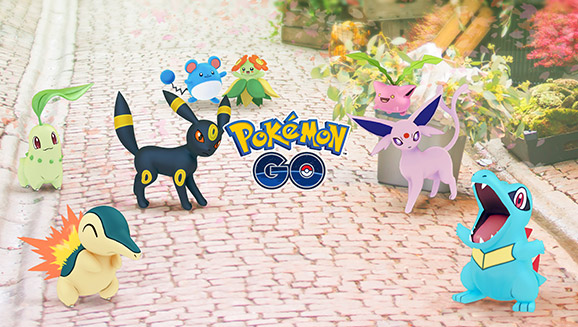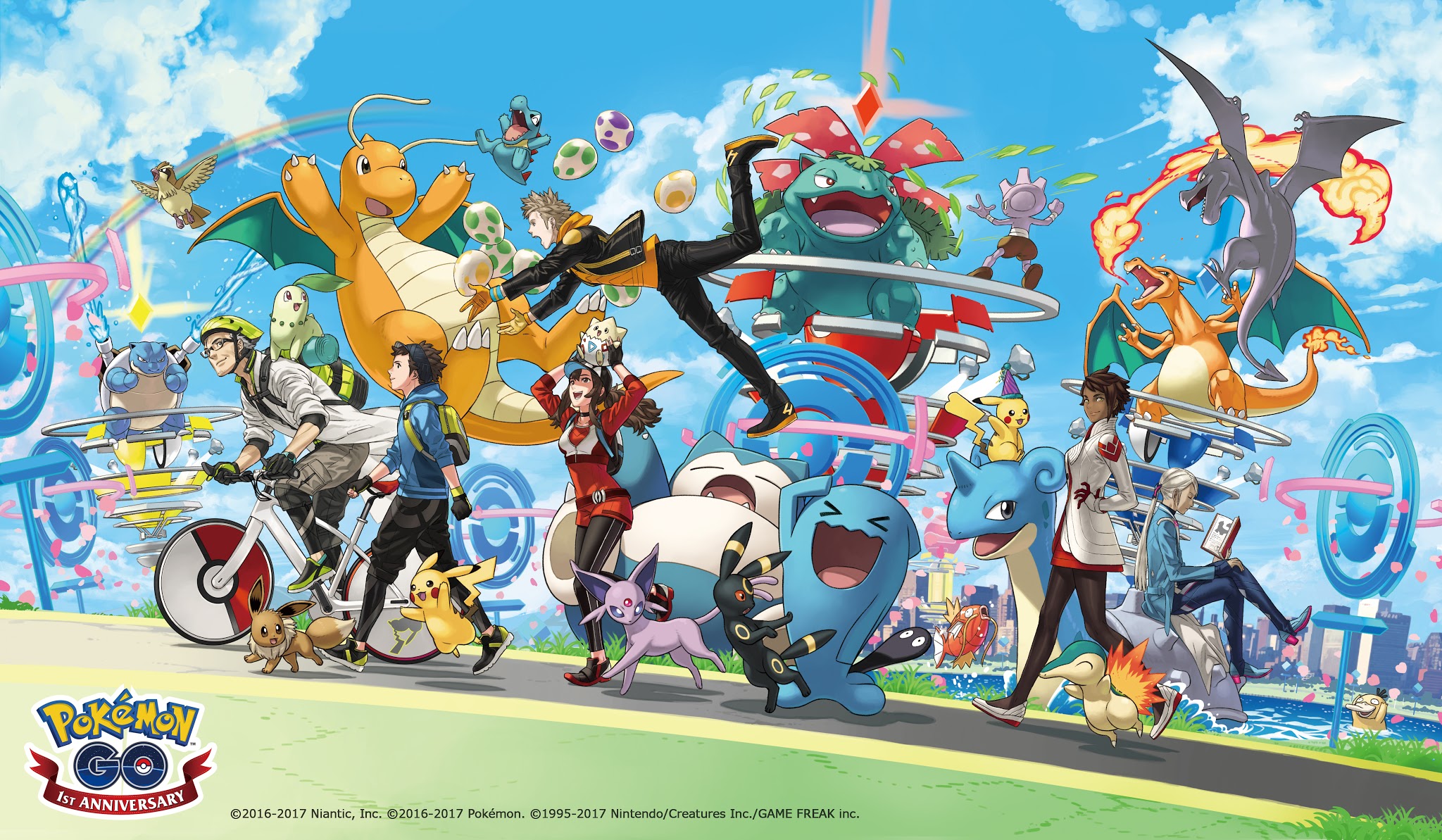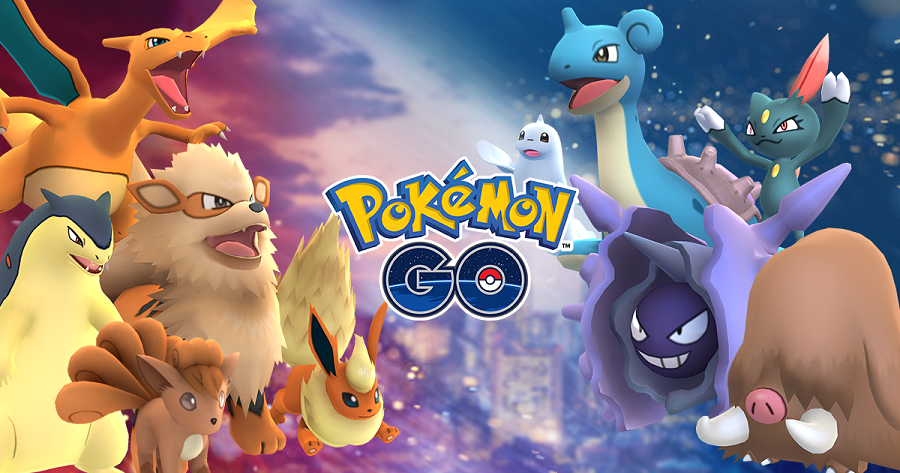Pokemon is an evergreen franchise. Throughout the series’ 20+ year history, it’s proven time and time again that it’s a juggernaut in the gaming industry. With it’s fun mechanics and beloved creatures, Pokemon is one of the most iconic gaming franchises bar none.
So when everyone’s favorite Pocket Monsters came to mobile devices in Pokemon Go, we all knew it was going to be big. But no one knew just how big it would end up being.
But now that we’re a year into the Pokemon Go phenomenon, we have to ask — has Pikachu’s magic touch allowed this mobile experience to compete with the main franchise? Does it have the same longevity and lasting impact that games like Sun and Moon have had? To answer that question, we’ll need to take a look at how Go and its community have evolved over the game’s first year.
The (Rocky) Beginning of a Phenomenon
Pokemon Go‘s story began way back in 2014, with a collaboration between Nintendo and Google which at first took the form of the April Fool’s Day prank — the Google Maps Pokemon Challenge. This fun little diversion saw players scouring the online Google Maps pages to catch tiny sprite versions of 721 different Pokemon. Though the idea started as a simple collaborative prank, sparked the idea of Pokemon Go that would eventually grow into the game we know today.
Pokemon Go‘s pre-release period was surprisingly calm, considering how turbulent its actual release date was. Fans were excited for the game, but few could have predicted just how much of an event it would be. There were occasional debates about whether the game was going to feature only the original 151 Pokemon, whether or not Shiny Pokemon would be available, and the occasional disgruntled fan complaining that it wasn’t a new main series title. Not even the Pokemon fanbase knew what was coming.
To say Pokemon Go‘s launch period was turbulent would be an understatement. The sheer excitement, the crowds of people out chasing their favorite virtual creatures, all the videos and photos of people playing…it was a lot. In first few days after the game’s launch, you couldn’t walk down the block without seeing people flicking Pokeballs on their phones to snag their latest buddy. In just a few days, the world was enraptured by Pokemon again, as if it were 1996 all over again. People couldn’t get enough.
Niantic, Pokemon Go‘s creator, had dreadfully underestimated the magnitude of what they were dealing with. As the game went live, they scrambled to try and keep servers running, get a foothold in social media, and fix some nasty launch bugs. Alas, they were understaffed and unprepared, and so those bugs continued to plague early PoGo for quite a while.
Early on, people didn’t care. They were all too busy chasing that new shadow on their radar, and the novelty was still fresh. It wasn’t until later that people started to notice the chips in PoGo‘s paint.
A Downward Turn
What really kicked off the turnaround on Pokemon Go was Niantic’s odd decision to remove the tracking system. What was once a fun way to track down the Pokemon closest to you with a decreasing footstep counter became a screen that simply told you “Hey these guys are near you somewhere.”
For those in areas with tons of Pokestops, this was eventually fixed. But for those who weren’t? The problem that still hasn’t been addressed, a year later. All that’s been done is a little grass texture has been added. Either way, it was the removal of the tracking system that kicked off criticism of the game and Niantic’s treatment of it. After the tracking system got removed, criticism started ramping up, and the game’s popularity started going down.
One of the biggest issues with the game’s continued popularity was Niantic’s poor communication with its community. For the longest time, Niantic didn’t have any social media presence — meaning changes like the tracking removal came completely unannounced. For a long while, Niantic remained completely silent altogether. Even when the company did create social media accounts, it took those accounts a good amount of time to actually address any actual issues. And by the time they did, the damage had been done.
While the game was still popular, it was no longer the cultural phenomenon it started out as. When the game first launched, you used to be able to walk down the street and see tons of people playing and talking together. But after losing the tracking feature and getting increasingly fed up with Niantic’s practices, it seemed that most players moved on — with only a few stragglers still as open about their love for the game.

A Few Redeeming Qualities
For the most part, Go faded into the background for a while. Some people still played casually, but there were no stories of bodies being discovered by Go players, nor news articles about people quitting their jobs to play. It just became a quiet, casual thing to do while you were already out.
Some scattered events, like the different holiday Pikachus and type-centric events showed up — but most of the changes were small. Even the new Pokestop-based tracking system, though it was cool, didn’t do much to revive the community. So far, only two things have been big enough to give Go a bump in popularity have been the addition of Gen 2, and the more recent Gym/Raid Update.
Gen 2’s addition caused a spike in people out on the street, but it was only temporary. Just as with the original 151, people caught all of the common Pokemon religiously for a while, before eventually getting their fill and only playing occasionally. However, the recent Gym Update seems to be having a bigger effect, mostly thanks to the ingenious Raid system.
With Raids, large groups of people are now regularly meeting up to take on Raid Bosses, once again making groups of Pokemon players a regular sight in big cities. Combined with the recent Ash Hat Pikachu event, it seems like Pokemon Go might finally be getting back in stride to get big again — or at least find a more stable and happy player base.
It may never reach the same fervor that it enjoyed a year ago, but these latest events, and upcoming ones like Pokemon Go Fest Chicago, show that Pokemon Go is carving out a long-term niche for itself. Pokemon Go looks like it’s here to stay.
So happy first birthday to Pokemon GO, and here’s to many more! (And hopefully to Gen 3 sometime soon.)









Published: Jul 12, 2017 10:30 pm